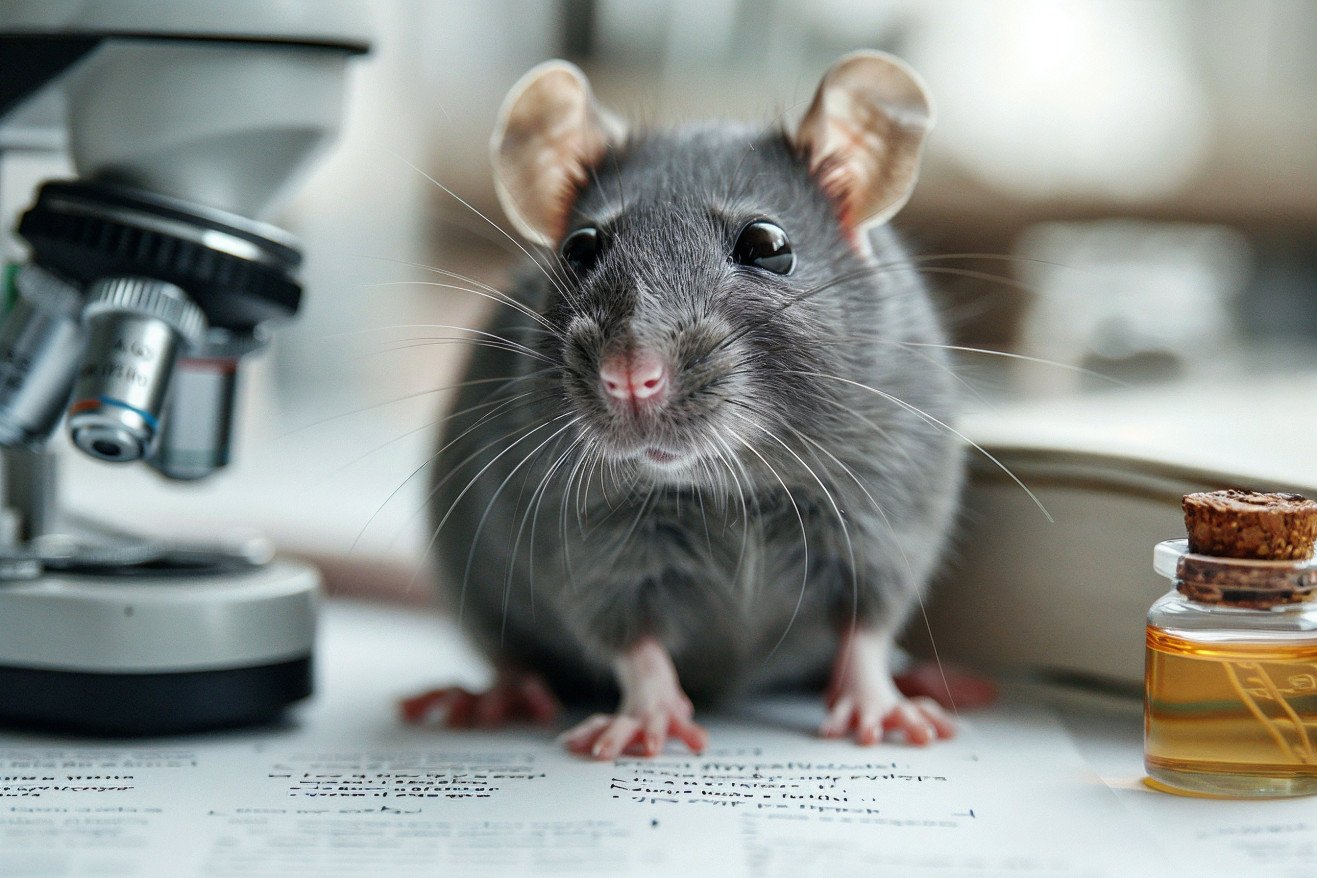Do Rats Have Rabies? Unpacking Rodent Risks and Research
1 March 2024 • Updated 1 March 2024

Rats are a common sight in urban areas, but are they also carriers of the dreaded rabies virus? Rats are not known to carry rabies, and they are not known to transmit the disease to humans. According to the Centers for Disease Control and Prevention (CDC), small rodents, including rats, are extremely unlikely to have rabies and are not a public health concern for rabies transmission.
In this article, we will take a deep dive into this subject, covering research from veterinary science, epidemiology, and public health. We will also look at animal behavior studies, viral pathology, and ecological studies that have looked at the roles that determine a species’ susceptibility to rabies. This in-depth review will help you better understand the risk of rats and rabies and why these animals are not likely to spread this deadly disease.
Do rats have rabies?
Looking at Rabies in Rodents
Even though the idea of a rat with rabies is one that has been popularized in the media, the numbers show that this is far from the truth.
In fact, researchers who looked at passive animal rabies surveillance data from 1995 to 2010, which was published in the journal PMC, showed that rodents and lagomorphs are a very small part of the rabies picture.
Groundhogs were the most common rabid rodent, but they were still a very small part of the picture, and rabies in smaller rodents like rats was even less common. For example, in the period studied, less than 0.05% of the many squirrels tested were rabid, showing that the disease is very rare in smaller rodents.
In addition, the Wisconsin Department of Health Services notes that this is the case, saying that small rodents and lagomorphs are rarely infected with rabies and are not known to transmit the disease to humans.
In fact, the distribution of rabies in rodents and lagomorphs is very limited, with most cases occurring in groundhogs in areas where raccoon rabies is present.
When compared to wildlife such as raccoons, skunks, and bats, which are responsible for most of the rabies cases in the United States, rodents are a very low risk. Understanding the biological reasons for this low risk can help explain why rats and other small rodents are unlikely to carry rabies.
The Science of Rat Resistance to Rabies
The physiological and immunological differences in rats are the biological reasons for their low rates of rabies. Rats have a more effective innate immune response to rabies virus (RABV) than other mammals, and this may be due to their evolutionary history and the way they live.
A paper in PMC by Matthias J. Schnell shows that the immune status of the host is a critical factor in the transmission and infection dynamics of rabies. Rats, which are often exposed to many pathogens, may have evolved a more aggressive immune response to pathogens like RABV.
In addition, rats’ small size and behavior make them less susceptible to rabies. Because of their urban environment and nocturnal lifestyle, smaller mammals like rats are more likely to suffer from less severe bites that may not effectively transmit the virus, or they may have less contact with species that carry rabies.
In addition, a paper in Nature Reviews Disease Primers by Ashley C. Banyard notes that bite force and saliva are important factors in the transmission of rabies, and the lower bite force of small rodents may not be strong enough to penetrate deeply enough to transmit the virus effectively.
Looking at the interplay of rats’ biology and behavior helps to put their ecological roles into perspective and shows how these factors work together to make rabies rare in rat populations.
Investigating the Ecological Determinants of Rat-Borne Rabies
The relationship between an animal’s ecological niche and its behavior has important consequences for its likelihood of contracting rabies. Rats are known to live in urban environments, which, as a PubMed review notes, can be hotspots for pathogens due to the close proximity between rats, humans, and other animals.
However, the environment in which they live also determines their interaction with the typical carriers of rabies, such as raccoons and bats, who are less common in urban areas. Furthermore, as urbanization increases and humans encroach on the habitats of other animals, the likelihood of rats coming into contact with these carriers of rabies may decrease even further.
As a study in PMC notes, different ecological zones, including urban and rural areas, have different pathogen profiles, which means that rats are at different levels of risk for contracting rabies depending on where they live.
In addition, the increased monitoring and potential for disease control that comes with the increased surveillance of rat populations in urban areas may help to lower the prevalence of rabies in these populations.
As a result, ecological and behavioral determinants are important in shaping the risk of rabies in rat populations, leading to a complex relationship that needs to be studied in depth to be fully understood.
Rabies Transmission in Different Species
The transmission of the rabies virus by various mammalian species is a result of a complex interplay of factors that vary from species to species.
According to the World Health Organization, the vast majority of human rabies cases are the result of dog bites, which are responsible for up to 99% of all transmissions.
In general, the rabies virus is transmitted through virus-laden saliva via bites, scratches, or mucosal contact. After the virus is transmitted to the host, it replicates in the muscle tissue near the site of the bite before traveling to the central nervous system, where it causes severe neurological symptoms. If left untreated, rabies is almost always fatal.
Comparing the transmission dynamics of rats to more common rabies vectors like raccoons and bats helps explain why these small rodents are rarely involved in the transmission of rabies.
Rats are less likely to transmit the virus than raccoons and bats, which have more powerful bites and more frequent interactions with humans and other animals, because rats are smaller and have a less powerful bite.
The size of the animal, the composition of its saliva, and its behavior all play a role in whether or not it will be a vector. According to Medscape, bats are now responsible for the majority of unrecognized, untreated rabies exposures in the United States, while rodent bites, including those from rats, are not known to transmit rabies.
These differences show the complex relationship between species behavior, ecology, and the mechanics of disease transmission, and underscore the importance of targeted prevention strategies in public health.
Public Health Concerns: Rabies in Rodent Populations
While the risk of rabies in rodents, especially rats, is low, there are still important public health concerns. ScienceDirect noted a significant decrease in rabies cases after the mass vaccination of domestic animals, showing that this is an effective way to prevent the spread of the disease.
This is why it is important to make sure that pets and other domestic animals are vaccinated against rabies to prevent the virus from jumping from wildlife to humans.
In addition, successful public health interventions rely on education and awareness as important tools in the fight against rabies. Public health messages warn people to stay away from wild or stray rodents and to seek medical attention if they think they have been exposed to rabies.
The NCBI Bookshelf guidelines explain that if rabies is suspected, post-exposure prophylaxis (PEP) should be started immediately, which means that it is important to make sure that medical care is available.
If a rat bite does occur, the medical community advises that the wound be washed thoroughly and that medical care be sought immediately to determine if PEP is necessary. By staying informed and making sure that people know how to interact with pets and wildlife, we can make sure that we are aware of the dangers of rabies and act accordingly.
Finding Your Way Out of the Myth: The Truth About Rabies and Rats
After winding through the maze of myths and facts about rats and rabies, the evidence has pointed to one conclusion: the chances of rats transmitting rabies to humans are incredibly low. The information from the Centers for Disease Control and Prevention (CDC) has helped form this conclusion, as it shows that rats are very unlikely to carry the rabies virus.
In fact, small rodents like rats are very unlikely to get rabies or pass it on to other animals, and cases of rabies that are associated with rats are very rare compared to other animals that carry rabies.
Despite this, the scientific community has continued to stress the importance of research and monitoring when it comes to rabies in rodents.
This is important to make sure that we are ready for any changes in how the disease is transmitted or how it behaves.
As we continue to try to make sure that we are keeping people safe while also making sure that they have the information that they need, it’s important to make sure that we are dispelling myths and making sure that we are being clear and direct about the low risk of rats transmitting rabies to humans.
This will help people make sure that they are informed instead of scared, and it will help them take a more active role in preventing and controlling rabies. It’s important to make sure that we are monitoring potential health risks, but it’s also important to make sure that we are committed to being accurate and educating people.


